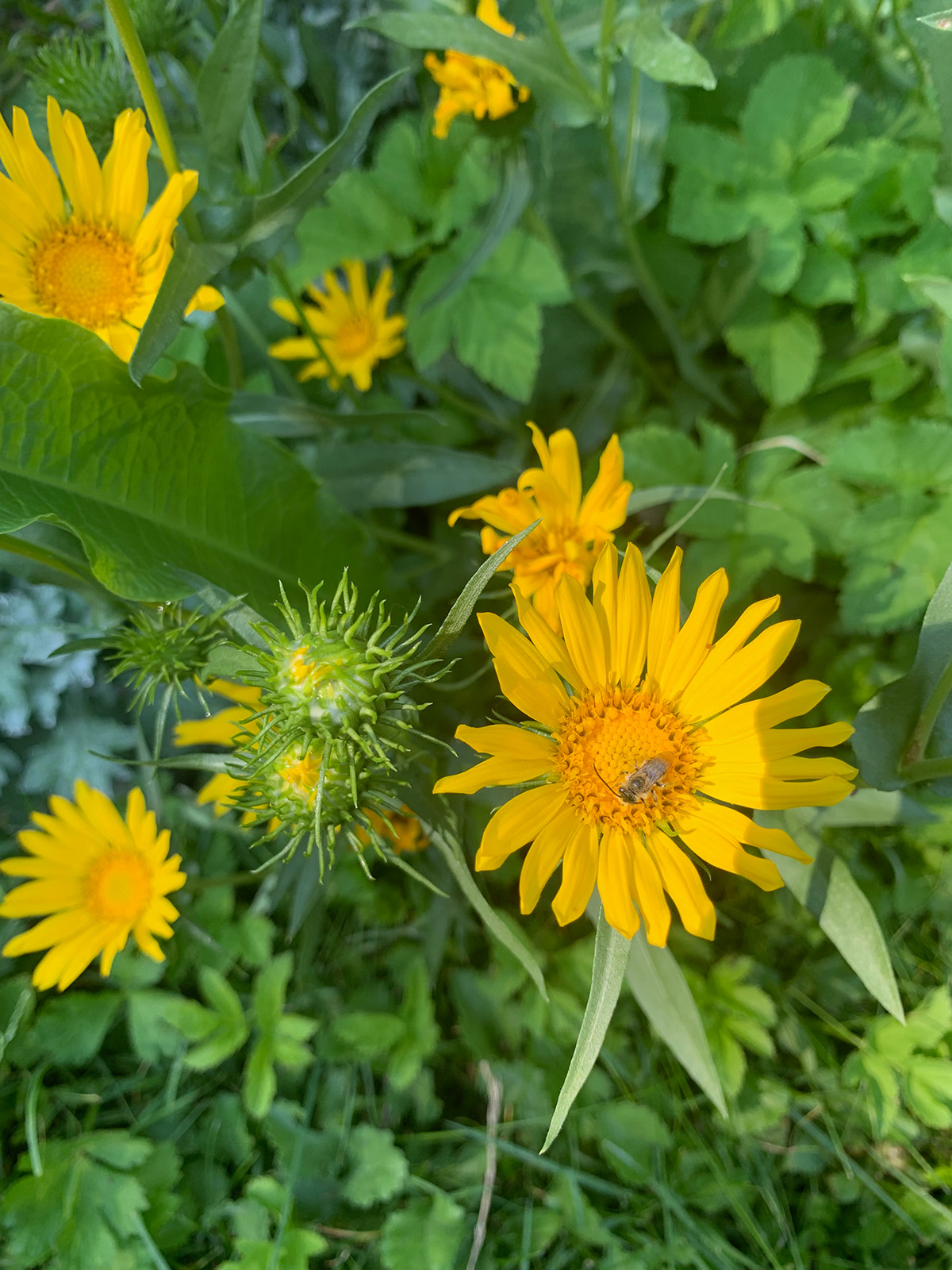
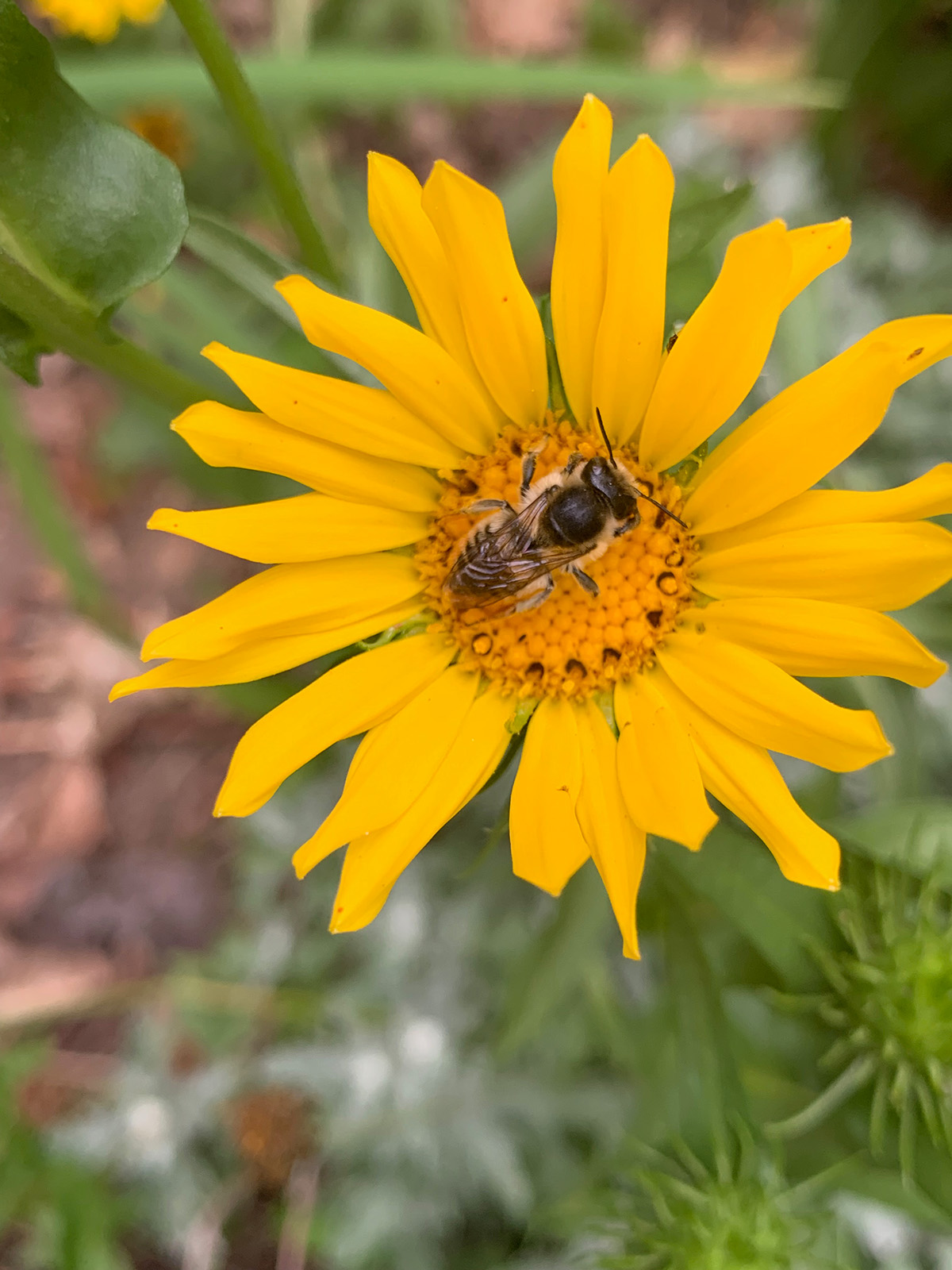
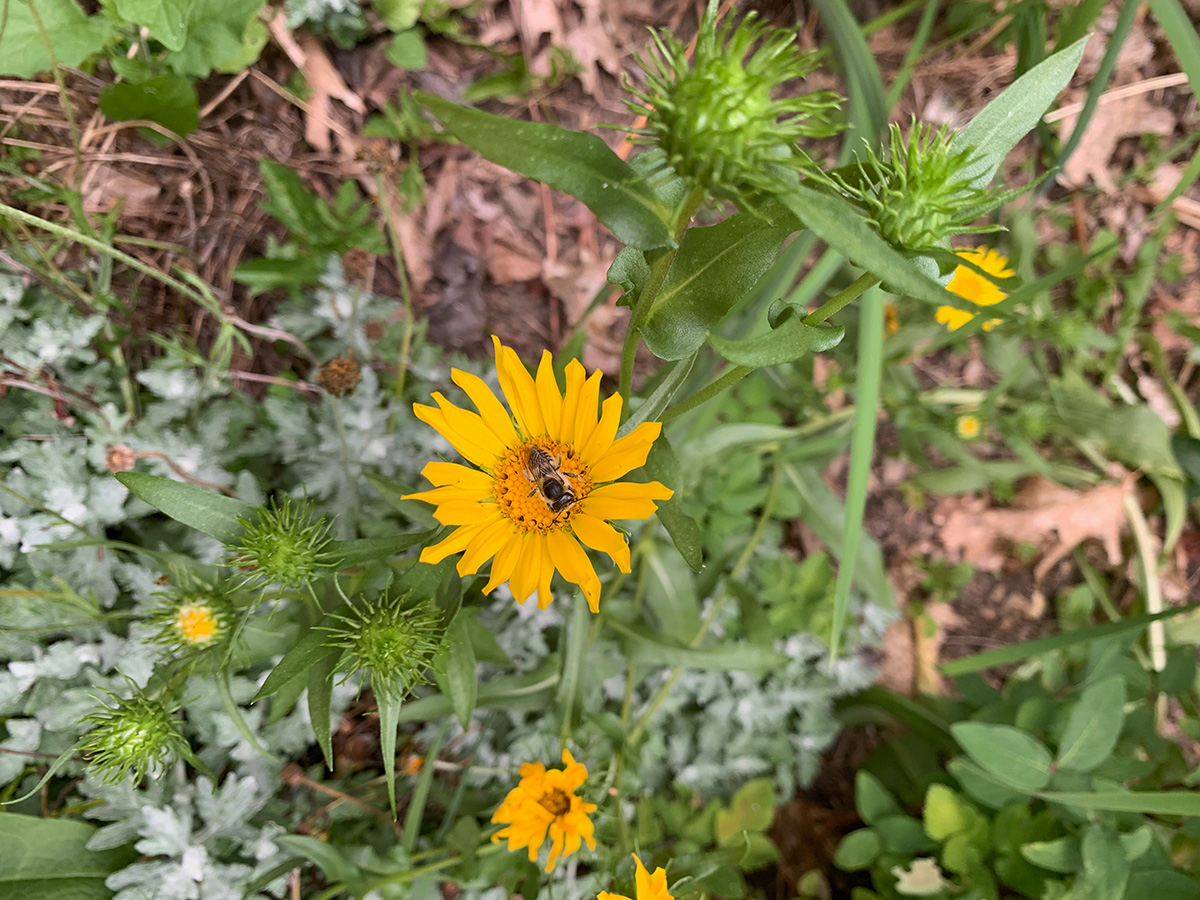

About Gumweed
Herbaceous multi-branched perennial
Common Names: Gumweed, Oregon gumweed, Entire-leaved gumweed
Species: Grindelia stricta
Plant Family: Asteraceae
Zone: 6-10
BEC Zones: CDF, CWH
Height: 30-80 cm; max 1.5m
Width: 30-80 cm
Conditions
Sun: Full sun is best; tolerant of part sun
Soil: Average; summer drought tolerant
Moisture: Average to drought levels
Exposure: Open
Appearance
Shape & Stem: Branched stem base from taproot; 30-80 cm tall with nearly glabrous (smooth) stemssome fine, long hairs
Leaf: Basal leaves alternate, toothed or entire; lower leaves oblanceolate, up to 40 cm long and 4 cm wide; stem leaves unstalked, sometimes clasping
Flower: Inflorescence of solitary heads or a flat-topped cluster of heads; disk 1-3 cm wide; bracts slightly or moderately sticky
Bloom: mid-summer into fall; June-November
More Information
Maintenance & Pruning: A tough and adaptable plant, ideal on coastlines. Grows larger in deeper and richer soils; keep in dry areas to control size or prune back as needed. A slow spreader, it is easily controlled by digging it out where it is not wanted.
Landscape Use: Beaches, coastal bluffs, ideal in drought-prone areas, rock gardens, wildflower meadows, and prairie restoration. Can look scruffy by the end of season but leave seed heads for wildlife.
Propagation: Divide after flowers die down in the fall. Propagates well from seed. Spreads slowly by seed.
Pests, Animals & Diseases: Extremely pollinator-friendly for summer bees: leafcutter bees (Megachile spp.), long-horned bees (Melissodes spp.) and green metallic sweat bees (Agapostemon spp.). Deer-resistant, late-blooming, salt-tolerant. Seed heads used by birds over winter.
Similar Species:
- Curlycup Gumweed (Grindelia squarrosa) grows in the dry inland West and across California.
- Puget Sound Gumweed (Grindelia integrifolia) grows in moist coastal conditions found in the Pacific Northwest.
Other Notes:
- Wear gloves when handling the sticky flower heads to protect clothing.
- There are about 60 species of Grindelia in North and South America.
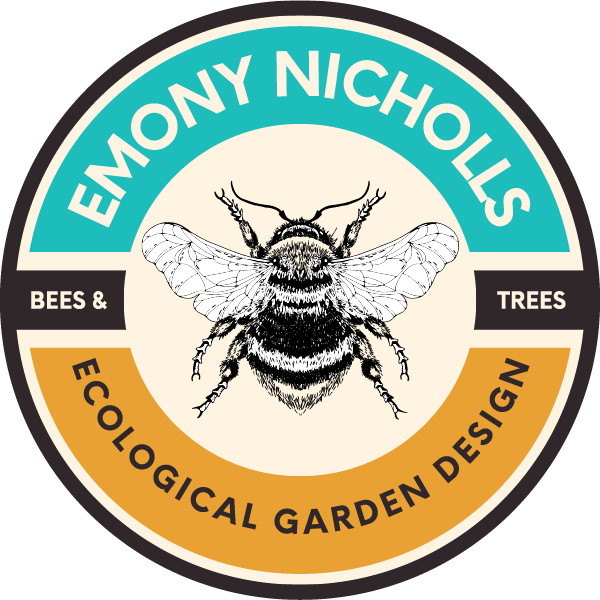

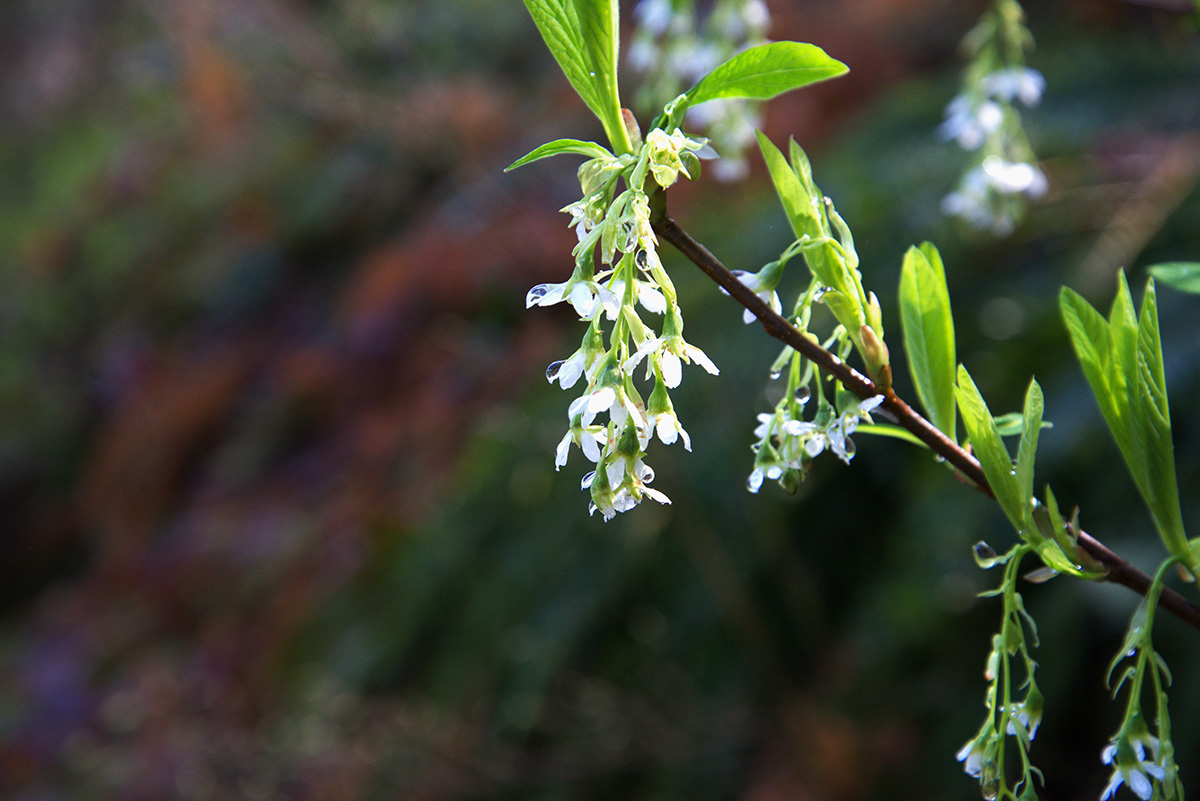
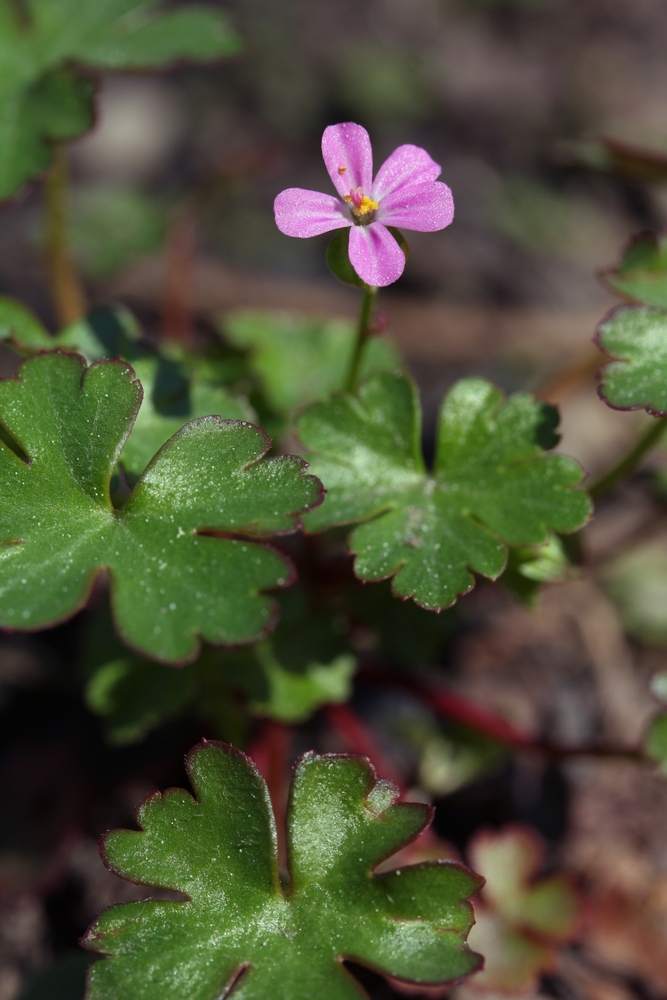
Leave a Reply